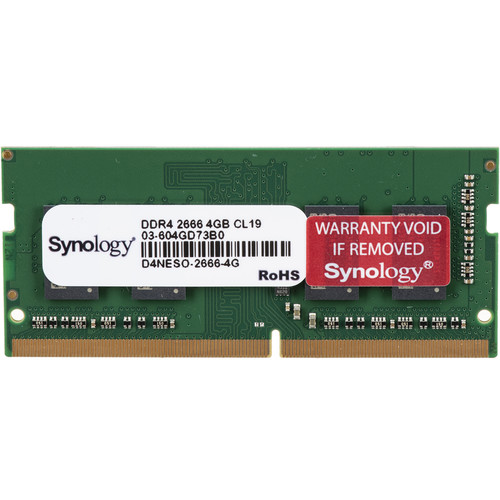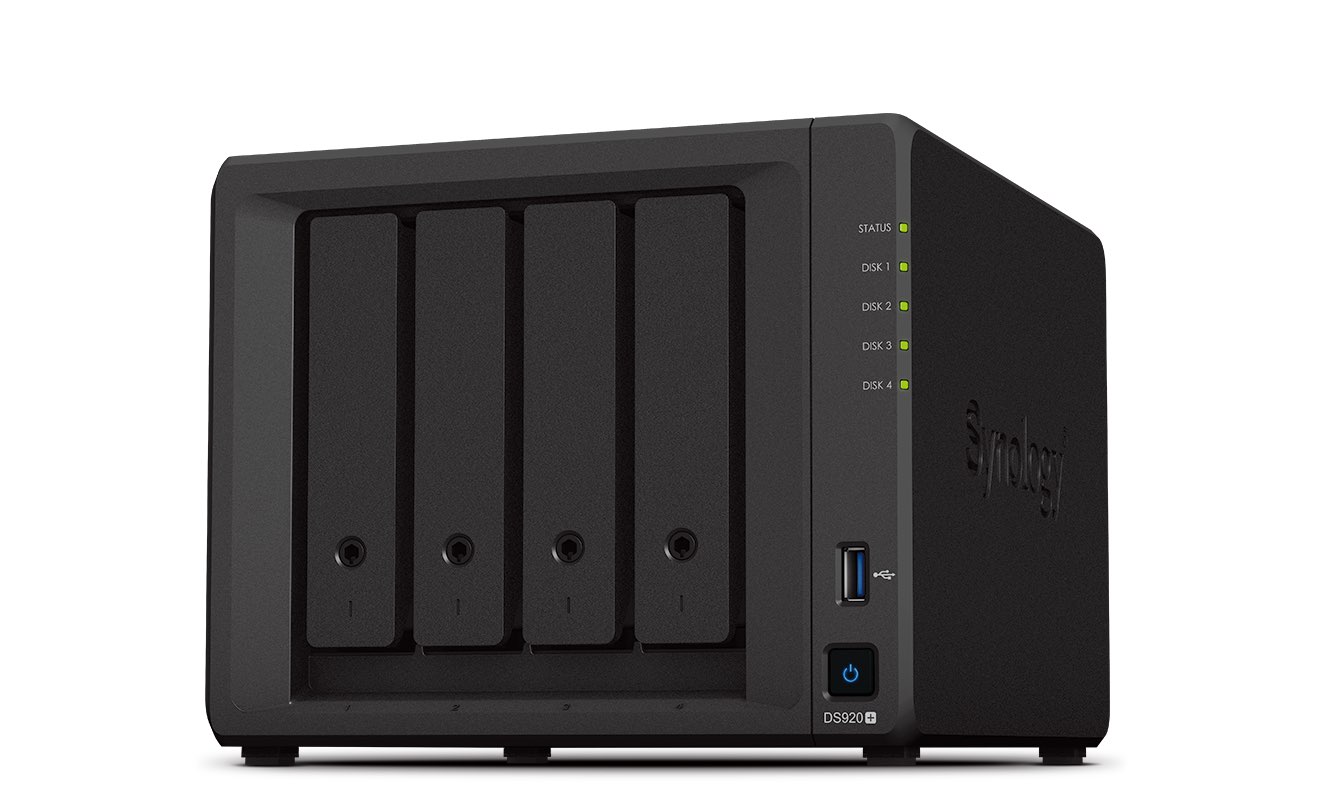Ditch External Drives and Get Your Team Video Editing From the Synology DS920+ NAS
If you’re reading this then the likelihood is that you either came from my article on the Best Synology NAS for Video Editing or that your storage needs have outgrown swapping around external drives and you need your team to all be working from one source.
Well, you’re in luck!
This article is going to show you the ins and outs of the Synology DS920+ and how it could transform your post-production team’s efficiency and ultimately, boost their creativity.
How do I know what I’m talking about? Head to the DigiProTips Experience and Background page to find out how I’ve built up my knowledge over a career spanning feature film, broadcast TV and digital content production.
Formfactor
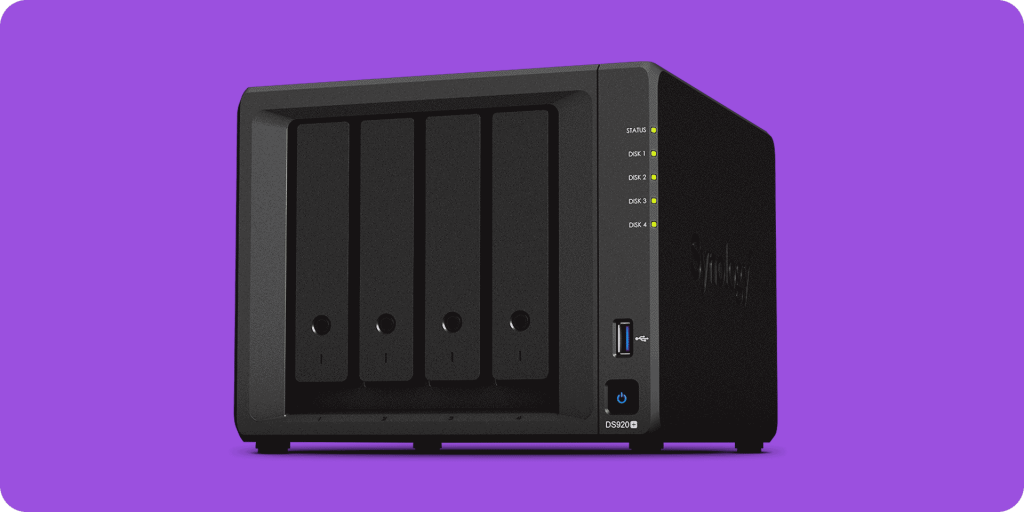
The DS920+ is a four bay NAS. This is a significant jump in terms of storage for a few reasons but I’ll get on to that later.
With the extra bays comes a bigger form factor, 166mm x 199mm x 223mm specifically and 2.24kg without any drives inside.
That takes up some desk space but it is still a desk top form NAS and as such it won’t need a comms cabinet to rack mount it or need any other special treatment that larger NAS’ require.
One thing is for sure, it won’t take up anymore room than all those external drives scattered about your desk tops.
DISCLAIMER: This post may contain affiliate links. We make a small commission if you buy the products from these links (at no extra cost to you). As an Amazon Associate, we earn from qualifying purchases. But we only recommend products we would use ourselves. For more information, click here to see our disclosures.
Hardware
Now, the DS920+ size range of NAS’ is where we start to see some decent internal specs that will give your post-production team a real boost in productivity and speed.
Inside it is an Intel Celeron J4125 4-core 2.0GHz CPU with burst up to 2.7GHz. Accompanying that is 4GB of DDR4 RAM.
That’s a worthy amount of hardware power to fire through read and write processes, as your team edit 4K footage in real-time from this NAS.
While 4GB is double the baseline RAM that you get with the DS720+ I would still highly recommend that you max this thing out with 8GB of RAM if you’re filling all four bays with storage.
If you plan to take advantage of the SSD cache facility (which is an absolute no-brainier), you really want to ensure that you have given the NAS all the fire-power it can handle to maximize those processes and give your team the best possible editing experience.
I’ll talk about the SSD cache in a bit.
Upgrade the memory in your compatible NAS server with the 4GB DDR4 2666 MHz Non-ECC SO-DIMM Memory Module from Synology.
Ports
The DS920+ doesn’t feature anything majorly advantageous, in terms of ports, over other NAS’ from Synology in this range.
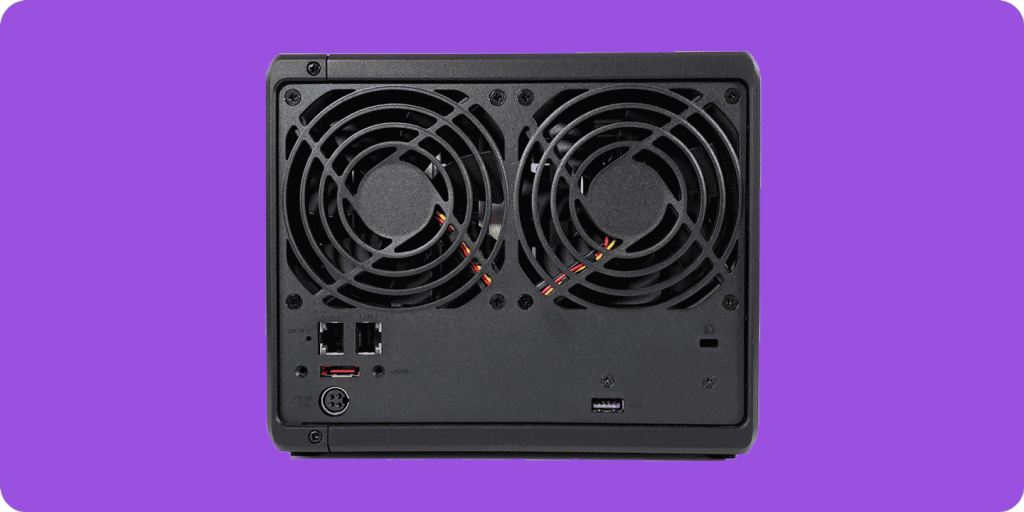
You get the standard USB3.0 port, 2 x 1GbE RJ45 ports and an eSATA to connect a Synology expansion unit to.
The ports you need to pay attention to here are the 1GbE LAN ports.
Why?
Because with 2-4 users accessing and editing from this unit at the same time and all trying to edit 4K footage in real-time, you are going to need to use both and have them bonded to create a shared 2Gigabit connection to your NAS.
Note. This is not to be confused with a 2.5GbE connection where you would get 2,500Mbit/s bandwidth. A bonded connection simply means the two connections are used together as one connection under the same IP address and you still get 1Gigabit transfer speeds but the workload is shared across both ports. This means more users can get those speeds at once.
If you’re in the market for a NAS that can handle more than 4 users editing 4K footage in real-time, you need to start looking at the 10GbE connected NAS.
I’ve got an article on 10Gigabit 4K editing here:
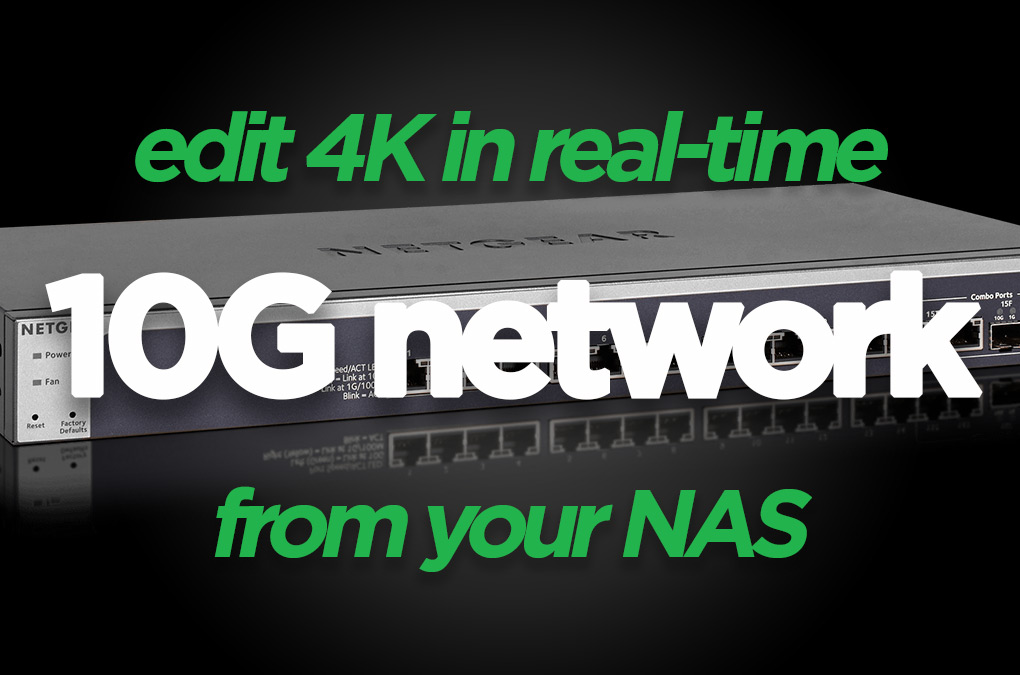
Drive bays
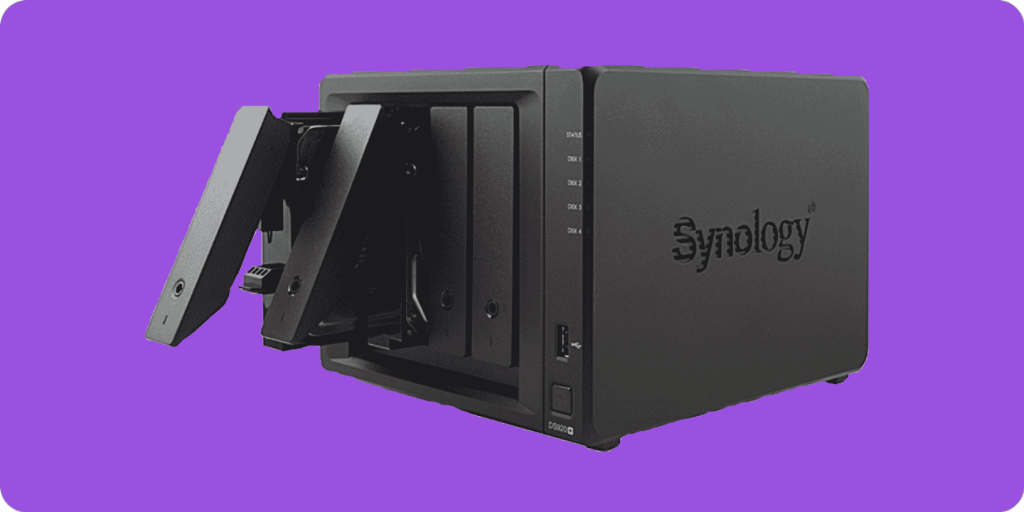
With four drive bays, your options for backup and failure tolerance increase and you can start to look at RAID options other than just mirroring.
This gives you more storage overall and if a drive fails, you can easily replace it without losing data.
To use these features you will need to fill all of those bays with HDDs.
Which HDDs?
Well, I’m glad you asked!
My accompanying article on IronWolf NAS drives should give you all the information you need to know why I prefer them for use in NAS systems and what advantages they provide compared to other HDD brands.
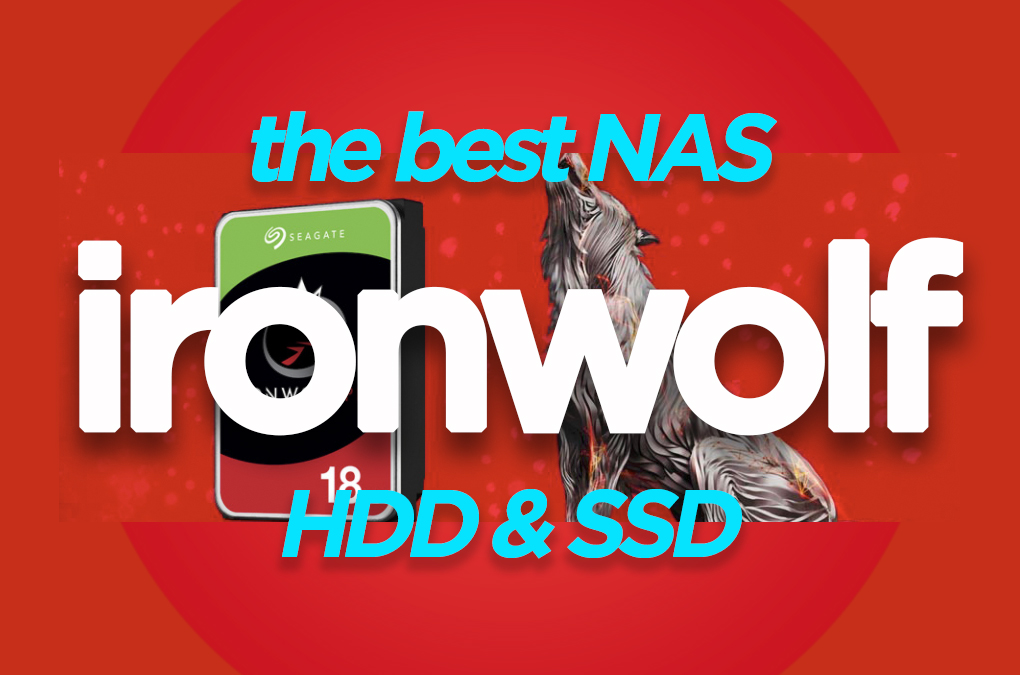
When it comes to drive bays and HDDs, my advice is always to buy the most storage you can afford of the best HDD type. You want to ensure you have enough storage to see you through the next couple of years at least and you want to ensure that storage won’t fail on you.
You also don’t want to fill your NAS with 8TB drives, fill them up and then have the headache of trying to swap them out for 16TB drives and keep all your data intact.
NAS drives are the most expensive part of a NAS setup, so getting the best you can afford is important. It’s like buying lenses and camera bodies. The camera body is usually the least expensive part of that configuration.
Ironwolf internal Hard drives are the ideal solution for multi-user NAS environments that demand powerhouse performance. Store more and work faster.
RAID Levels
I won’t go too much into RAID levels, I’ve covered it in more detail in the Best Synology post but for those who have come straight here, RAID is a way of setting up your NAS to have backup/failure tolerance built-in by using some of the available storage.
You can choose different RAID levels depending on the size of your storage and how many drive bays your NAS has.
With 4 drive bays, your options go up significantly when compared to only 2 bays. You can now choose RAID 6 or RAID 10 for extra protection from drive failures.
With RAID 6 you also only lose around 2/5’s of your total storage capacity, that’s about 25TB of 64TB when you fill each bay with 16TB, leaving you with 39TB of storage capacity!
Expansion Unit
If you do find yourself running out of space but don’t feel like you want to upgrade the NAS enclosure to a bigger model then Synology makes it quite effortless to do that by offering the ability to buy an expansion unit that will let you add another five bays onto your total storage.
Connected through the eSATA port on the back of the DS920+ the Synology DX517 simply expands your current storage pool without having to reconfigure your NAS setup at all.
This means you can keep expanding and future-proof your NAS investment for years to come.
SSD Cache
Now, on to this aforementioned SSD Cache that I spoke so highly of.
If you’ve come from my article on Synology NAS’ then you may have read about SSD caching there. If you haven’t then all you need to know is that it’s a great way to improve the speed of access to your most frequently used data without using any of the rest of your storage.
An SSD Cache utilizes SSD drives to store your most frequently accessed data on the NAS. Because SSDs have faster read and write speeds than HDDs your computer can retrieve information from the SSD faster than if we’re accessing that data on the HDDs.
So, in a real-world scenario, this would mean that once you have copied across your rushes from a shoot to the NAS and started working on them, the Synology would recognize that this data is being frequently accessed and move it to the SSD, it would also move any recurring graphic overlays or end cards that you use on projects.
This now means you are editing from SSD storage rather than HDD and all your older projects and data that you don’t need from previous projects is being stored on the slower HDDs instead.
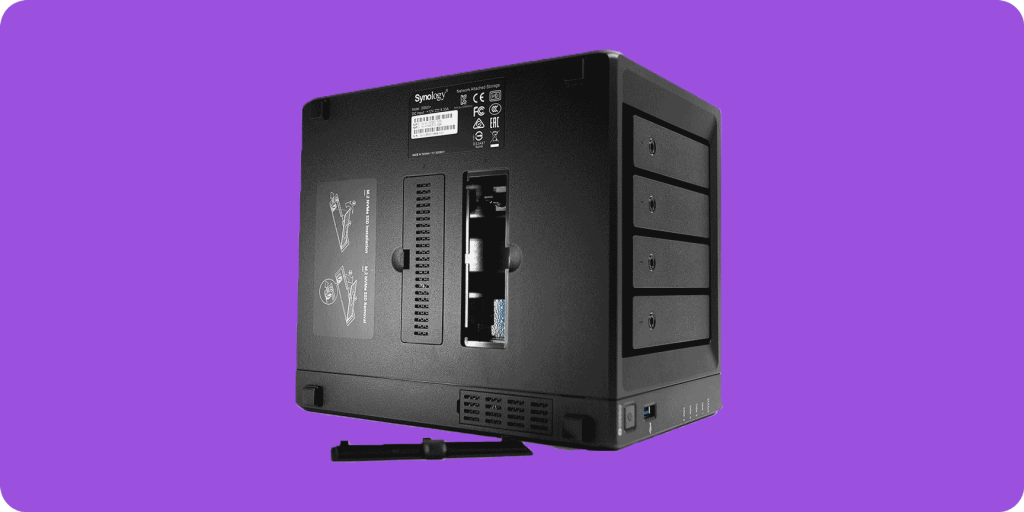
You don’t need to do anything to make this happen except purchase M.2 NVMe SSD drives to go in the two M.2 slots in the base of the Synology DS920+. The NAS will do the rest of the work for you.
If you can afford the extra budget for the SSD drives then this is an absolute no-brainer setup.
The ideal solution for multi-user NAS environments craving powerhouse SSD endurance and performance. Enjoy long-term reliability with 1.8M hours MTBF in a M.2 form factor.
Editing With the Synology DS720+
So, what is it like to edit with the Synology DS920+ for a small team of post-production professionals?
It will be a game-changer, that’s what it will be like.
Now, obviously, that’s my personal opinion and results may vary BUT I can say that if your team is currently editing from external hard drives or any other form of non-shared storage then there will be an increase in efficiency and productivity from your team.
I’ve set a fair few teams up on NASs in this size range and each of them have been absolutely thrilled with the results.
Being able to access the same information, on the same storage, at the same time, transforms the workflows for your team. You no longer need to swap hard drives around and send files to each other over Slack or email.
Even with a 1GbE connection, your editors will notice that their connection to their media is fast and snappy in their timelines. If you are using the correct workflows, have your cache drives set up right, and work with proxies then the speed increase could be even more significant.
If you want to push this NAS to the limits to get the best experience then upgrading the RAM to 8GB and utilizing the SSD cache will make 4K video editing in real-time will feel like a breeze!
The number of users you have will make a difference to your editing experience. With two 1GbE ports, your max limit for 4K is going to be about 4 users at one time. If you are editing in HD, you could push that to 6-7 but that’s not future-proofing yourself and you may want to look at bigger setups for the inevitable switch to 4K editing.
Note. 4K editing is based on using UHD/30 ProRes Proxy (46MB/s) format to edit with.
Remote Video Editing with Synology
A feature of all Synology’s, that I’ve found particularly useful over the past but especially during the recent COVID-19 pandemic, is the Synology Drive application.
It is your own personal cloud service that runs directly from the NAS and enables two-way syncing to a computer from any location.
This makes it perfect for working remotely with access to all of your files on your NAS from anywhere in the world.
It also means your team can still collaborate on projects as they’ll have access to the same files from home.
To find out more about using Synology for remote video editing then check out this article:
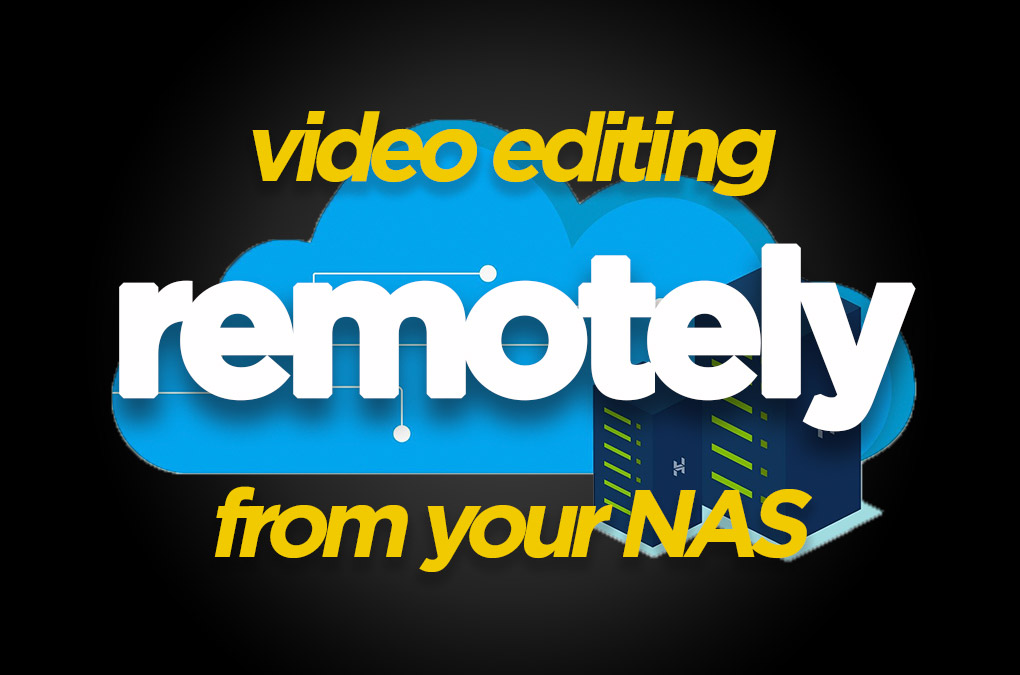
The Perfect NAS For a Small Team
If you’ve never worked with a NAS before then Synology makes it easy to get started. With great setup wizards on-screen and stripped-back UI functions, it’s easy for anyone to get set up and working from a Synology NAS.
The DS920+ will give you bang for your buck and will open up a whole new way of working for your team.
The freedom of not having to worry about which external drive has the media on that you need, or whether you’ve got the right USB cable or enough USB ports left for that matter, will not only improve the efficiency of your editors but they’ll also get improved speeds of access to their data too.
That means they’ll have more time to be creative in their editing and ultimately produce higher-quality work. That’s working smarter, not harder.
For a team of 2-4 editors then this really is the NAS for you.
As I mentioned before, the NAS enclosure itself is the least expensive part of the setup. The DS920+ retails for around $700/£650 without hard drives included.
To really get the most from this setup though, you should factor in upgrading that RAM to 8GB, the SSD cache (2 x 2TB SSDs) and filling all four bays with 16TB each. To do that, you’re looking at a cost of around $4,000/£3,500.
Synology DiskStation DS920+ is an ideal network-attached storage solution for small post-production teams to boost efficiency and productivity by working from the same storage space.
It’s well worth investing in the set up now to avoid headaches in the future and get the most from your NAS setup.
Help at Hand
If you are interested in getting set up on a Synology NAS for your team but would like some tailored advice or even some personal help getting set up, I have consultancy services available to help you do just that.

Happy Editing
I hope your new way of working and editing on the DS920+ is an enjoyable one and that you find the workflow as transformative as I have.
Let me know in the comments how you find it once set up and any tips you may have for others looking at getting set up with the DS920+.
For another Synology NAS option for smaller set ups, check out the Synology DS720+:

DigiProTips


